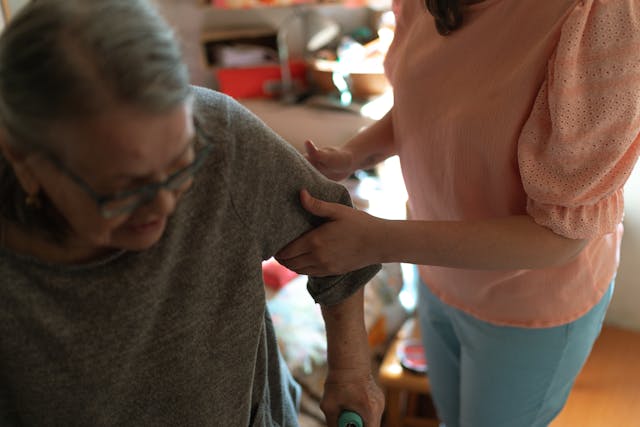Between 2011 and 2022, the number of family caregivers supporting older adults in home and residential-care environments saw a substantial increase of 32%, rising from 18.2 million to 24.1 million. This significant uptick was highlighted in a recent study by a collaborative team from the Johns Hopkins Bloomberg School of Public Health and the University of Michigan’s Institute for Social Research. Published in the journal Health Affairs on February 3, the research also sheds light on the increased caregiving burdens, particularly noting a nearly 50% rise in the weekly care hours dedicated to older adults with dementia—from an average of 21.4 hours in 2011 to 31.0 hours in 2022.
The researchers speculate that this increase might be partially attributed to more caregivers cohabiting with their care recipients. This comprehensive analysis was underpinned by data from the National Health and Aging Trends Study (NHATS) and the National Study of Caregiving (NSOC) spanning 2011 and 2022. NHATS routinely interviews a representative cohort of Medicare-enrolled older adults concerning their daily activities, while NSOC collects data annually on unpaid and family caregivers.
This particular study focused on older adults who required assistance with self-care, mobility, or household activities for health-related or functional reasons and the family or unpaid caregivers who supported them. In 2022, approximately 12% of these caregivers were non-family members, such as friends or neighbours, with the remainder identifying as family relatives. The leadership for NHATS and NSOC research comes from the Johns Hopkins Bloomberg School of Public Health and the University of Michigan’s Institute for Social Research, with funding from the National Institute on Aging, which is part of the National Institutes of Health.
Interestingly, the study findings revealed that in 2022, the caregivers were aiding older adults who were generally younger, more educated, and more likely to be male than in 2011. Even with an increase in the number of caregivers, the size of care networks for those with dementia remained constant, and there was little reported change in the difficulty of caregiving or the competing responsibilities faced by caregivers, such as employment and childcare—despite a decrease in the use of supportive services like respite care and support groups.
Jennifer L. Wolff, PhD, the director of the Roger and Flo Lipitz Center to Advance Policy in Aging and Disability, commented on the findings, noting, “Our results show remarkable stability in caregiving experiences, even as the number of caregivers has increased significantly. This runs counter to the policy narrative that emphasises dire concern about the effects of increasing demands being placed on family caregivers. However, we must address the specific challenges faced by subgroups, particularly those caring for individuals with dementia.”
The study highlighted that caregiving responsibilities continue to be predominantly assumed by women and some subgroups who are at a greater risk of facing negative consequences—specifically, caregivers to persons with dementia and those with limited financial resources. Given the projections that the population of adults aged 85 and older will triple by 2050, the researchers stressed the urgent need to address disparities in caregiver experiences.
In their detailed examination, the researchers explored three main areas: changes in the number and composition of older adults receiving family care, changes in the size and profile of the older family caregiver workforce, and changes concerning the dementia status of older adults. The NHATS sample included 2,408 older adults in 2011 and 1,856 in 2022, while the NSOC sample comprised 1,969 family caregivers in 2011 and 2,122 in 2022.
The team pointed out that although caregiving can be a manageable commitment for some, it often proves to be incredibly challenging for many Americans who support a person with severe disabilities or dementia. With a growing focus on value-based care and ageing in place, it is frequently assumed that family caregivers are available and capable of providing the necessary support. In conclusion, the researchers called for policymakers to develop robust support systems for family caregivers. Current initiatives, such as Medicaid waivers, the Medicare hospice benefit, and state-level paid family leave policies, provide targeted support. They advocate for a cohesive national strategy to address caregivers’ financial, emotional, and physical challenges, emphasising the critical role that family caregivers play in our healthcare delivery system. As Wolff stated, “Looking ahead, we must identify and support their needs to ensure they can continue providing the critical support that millions of older adults rely on.”
More information: Jennifer L. Wolff et al, The Number Of Family Caregivers Helping Older US Adults Increased From 18 Million To 24 Million, 2011–22, Health Affairs. DOI: 10.1377/hlthaff.2024.00978
Journal information: Health Affairs Provided by Johns Hopkins Bloomberg School of Public Health








